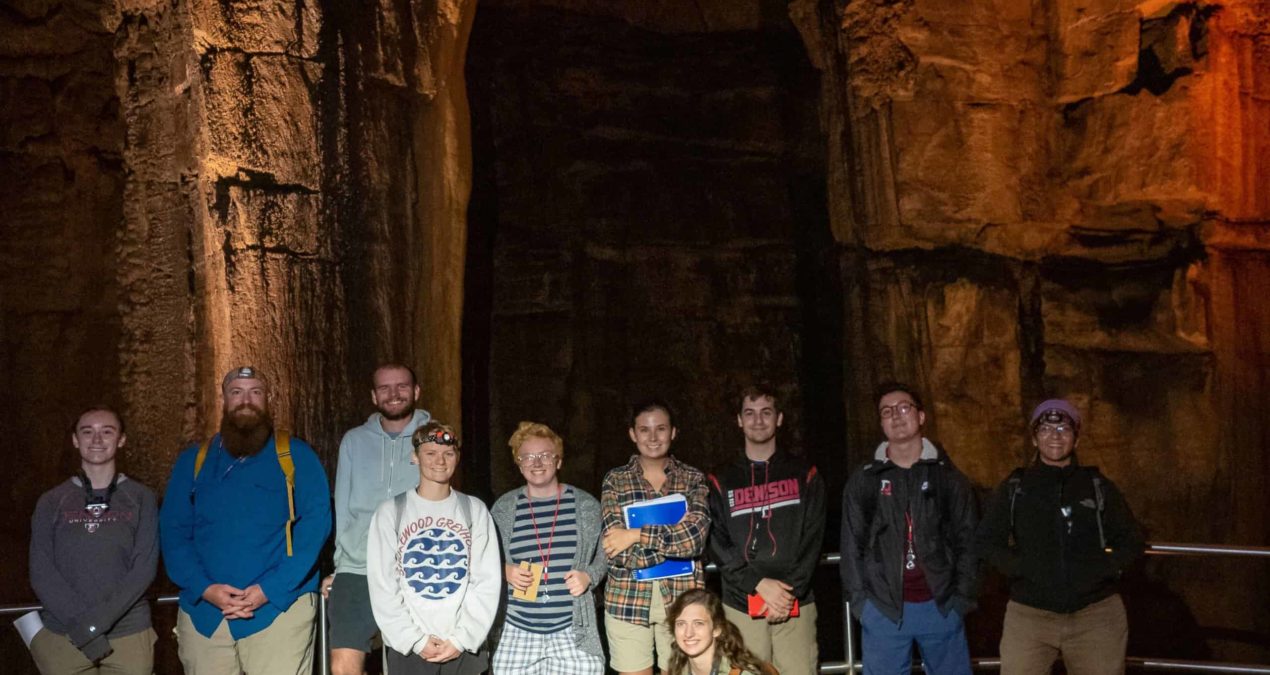LAURA LAPHAM, Arts & Life Editor — The geoscience department swam across lakes, crawled through narrow passageways and hiked through the woods all to see new and interesting rock formations to learn about the many processes of the earth in Kentucky.
The geoscience department traveled to Kentucky for their annual fall trip. This year the fall trip was September 11th to 15th at Mammoth Cave and Cumberland Lake to look at in the field examples of geologic processes that cannot be observed in the classroom. The students were accompanied by the new Sedimentology professor, Dr. Anjali Fernandes, and other professors from the department such as Dr. David C. Greene and Dr. Matthew Jungers. The group of eight students and three professors drove to Kentucky to learn about the geologic processes of the geologic formations there.
The first day of the trip, after driving out to Kentucky the previous day, was mostly observing the overall geology around Mammoth Cave looking at the karst landscape, a limestone landscape dotted with fissures and sinkholes. The department later canoed down the Green river to observe how the water drainage worked in the area. The group first stayed at a research center at Mammoth cave with some professional cavers. Day two was spent mostly underground in Mammoth Cave understanding the cave forming processes and what evidence to look for on how cave passages are formed. The last day before returning to Denison University was spent on Cumberland Lake looking at the sediment on the cuts by the edges of the lake to understand sedimentary processes and how the sediment can give away evidence of paleo-landscapes. Later there was observing of fossils in the limestone from the Mississipian, 358 to 323 million years ago.
These trips in the spring and the fall are very important to the geoscience department, since the department focuses on how geologic and environmental processes work and create the earth we live on today. It’s important to understand them from a classroom setting, but seeing examples of these processes in the natural environment is crucial, since it creates a wider lens of understanding.
“It was three of the best days of my life. I think it was really special because I feel like I learned a lot and learning to apply things from class to the real world,” says Eva Jorn ‘20, a geoscience major and biology minor from Milwaukee, Wisconsin and attendee of the geoscience trip. “This field trip was really good in that sense. There were a lot of advanced applications. And, of course, bonding with the department.”
The trips allow for a new level of understanding for those who attend and want to understand more about the planet.
The geoscience department departs every semester to a new location to view, apply, and understand what they learned in the classroom to the real world, allowing for a deeper sense of understanding and learning.

